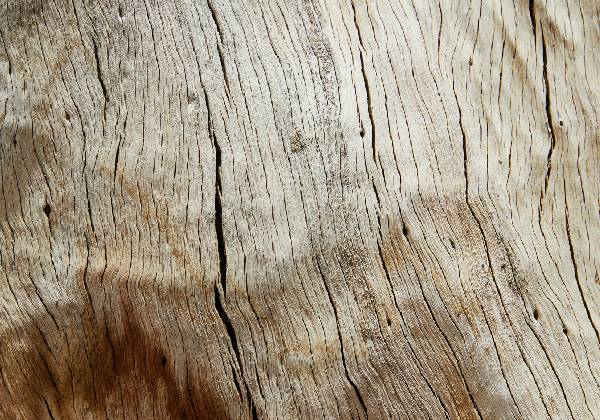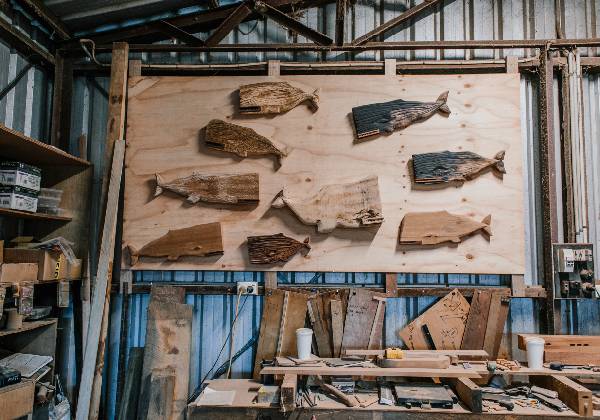If you’re noticing your wood starting to rot, don’t panic. There’s a fairly straightforward solution to repairing wood rot, and it doesn’t require any professional expertise.
This guide will walk you through the process step-by-step and teach you how to identify and fix wood rot the right way. So don’t hesitate – get started right away and fix your wood rot!
What is Rot Wood?
Wood rot is a natural process that occurs when the protective outer layer of a tree’s trunk, branches, or logs begins to deteriorate. This decay causes insects and fungus to feed on the cellulose in the wood, which eventually leads to its destruction.
Wood rot is typically benign and does not spread very easily, but it can cause structural damage if left unchecked. It is important to pay attention and fix it if you notice any signs of wood rot, such as cracks in your walls or flooring, excessive moisture levels inside your home, or buckling trees.
By doing it so early enough before major damage has occurred, you can minimize potential costs and repairs later on down the line.
There are 3 common types of wood rots. They are:
White Rot
Whitewood rot is the most common type of wood rot, and it’s caused by a variety of fungi. The fungus feeds on cells in the wood, killing them over time. This process can cause sections of wooden boards to buckle, split open, and collapse.
Though white wood rot is relatively easy to spot, it’s not always easy to treat. You’ll need to spray the affected area with a fungicide or seal it with a coating of wax or paint. If left untreated, white rot can quickly damage your furniture or other wooden items.
Brown Rot
Brown wood rot is a fungus that attacks the cell walls of wooden boards, causing them to rot and disintegrate. This type of rot is most commonly seen in lumber that has been stored outdoors for a long time or in wet environments like swimming pools and locker rooms.
The fungus grows best in moist conditions, which means that it’s easy for it to spread throughout a board if it’s not properly treated. Brown wood rot can also form on finished boards if they’re exposed to moisture and sunlight.
Soft Rot
Soft rot usually starts in the strands of the wood, where moisture and air get trapped. Over time, this moist environment encourages fungal growth, which then causes the wood to break down and collapse.
This decay process can cause extensive damage to walls, ceilings, floors, furniture, and other objects made from softwood materials.
Can Rotten Wood Be Repaired?
Yes, wood can be repaired if the damage is limited to dry rot or insect infestation. Wood that has been wet and/or damaged by mould or fire will likely not be repairable. Other than that, a limited amount of rot wood can be repaired.
While repairing rotten wood may not be the most glamorous task, it can still be done with a little bit of elbow grease and a willingness to get dirty.
How to Identify Dry Rot?

When the wood begins to dry out, it becomes susceptible to the fungus known as “dry rot.” Dry rot is caused by a number of factors, such as high humidity levels, insufficient airflow, and water damage. When these conditions are present, the fungi grow rapidly and cause extensive damage to the timber.
There are several ways to identify dry rot in wood, but the most effective way is to use a moisture meter. This tool measures the amount of water that is still present in any given area and will indicate whether or not that area is likely to be affected by dry rot.
How to Prevent & Get Rid of Dry Rot?
To prevent dry rot from spreading, first, inspect any area where there may be moisture-contaminated wood. This includes around furniture, under floorboards, and inside walls.
Make sure all seals around doors and windows are intact and if there’s an entry point for pests such as squirrels or rodents, seal them off with caulk or wire mesh. Keep your home clean by regularly dusting surfaces which come in contact with wood (like bookcases) and cleaning up spills immediately.
And lastly, treat affected areas with a fungicide spray or solution according to the manufacturer’s directions.
Common Places Where Wood Rot Can Be Found
- Decks
- Indoor siding
- Outdoor siding
- Door frames
- Window frames
- Basements
- Attics
- Furniture
- Windowsills
- Porches
- Thresholds, etc
How to Determine if Your Rotten Wood Needs to Be Repaired or Replaced?
If you are noticing any of the following symptoms, it is probably time to have your rotten wood repaired or replaced:
- Cracks in the wood surface expand and get deeper over time.
- Rot within the body of the tree or lumber.
- Uneven texture or grain on your pieces of rotten wood.
If these signs are present, then you should contact a professional who can assess and repair your damage. Alternatively, if you decide to replace rotting wood with fresh material, be sure to select plywood that is moisture resistant and has been treated against fungal growth.
In addition, if you’re not sure whether or not your wood needs repair or replacement, then you can use a moisture meter to measure the levels of moisture in different parts of the structure.
Warmer areas will tend to contain more moisture than cooler areas due to condensation from humidity-causing agents like mould and fungus.
What Tools Do You Need While Repairing Rotten Wood?
- Screwdriver
- Latex gloves
- Sandpaper and sanding block
- Chisel
- Claw hammer
- Putty knife
- Container
- Five-in-one tool
- Chip brush, etc
Which Wood Filler to Use?
One of these fillers you can use to fill the damaged spot or holes:
- Wood filler
- Two-part epoxy
- Sawdust & Glue
- Wood putty
- Wood candle
- Baking soda & vinegar
- Acrylic Caulking
- Polyester Paste
- Wooden Dowels
- Spackling Paste
8 Steps to Fix the Rot Wood

Step 1 – Remove the Rotten Part
Remove the rotten part of the wood using a wood chipper or a chainsaw. Make sure to wear safety gear and be aware of your surroundings while you’re working.
Step 2 – Use Consolidated
Pour the two-part solution into a clean plastic container and seal it. Mix the solution together with a wooden stick. With a chip brush, liberally coat the wood with the mixture. If the area needs to be fixed is large or deep, even you can pour the solution onto the affected area.
Step 3 – Mix the Filler
Choose a filler that is appropriate for the severity of your rotted wood. For mild cases, use a filling agent like epoxy; for more severe cases, use a more aggressive material.
But before you mix the filler, it’s necessary that the consolidant has had time to rest in on the area. Then mix the filler in a container with a stitch wearing latex gloves.
Step 4 – Apply it
Now apply a liberal amount of filler to the affected area. Use a brush or putty knife to apply it evenly and smoothly to the area. Make sure to cover all the crevices and gaps in the wood.
Don’t worry about applying too much – you can always add more later if necessary.
Step 5 – Shape the Filler Using Sandpaper or Sanding Block
Once the filler is dried on the surface, use any sandpaper or sanding block to evenly shape the filler to the size that will enable the new board to be put in place precisely.
This step is a little critical while fixing wood rot. So you have to be extra careful when you do this part.
Step 6 – Let the Epoxy Set Overnight
When the filler is shaped to size, it’s necessary to let it dry out for the next 24 hours before placing the new board. This will allow the filler to bond properly with the new wood and provide a more solid foundation for your finished product.
Step 7 – Sand the Filler Again
Sand the area again after filling it with filler. This will help remove any excess material, give the final smooth shape and reduce the chances of future decay.
Step 8 – Finally, Paint the Filler
Finally, you can paint or stain the area to match it with the other wooden areas around. And, it’ll make the wood look better. In addition, the painting will give the wood protection from any future rots or any other issues.
Final Words
In the end, one thing is certain – as soon as you notice any sign of wood rot, it’s time to act fast. In case you have a serious case of wood rot, do not hesitate to call an expert for assistance! It is crucial that your house does not get damaged because of the underlying issues left behind by this condition.